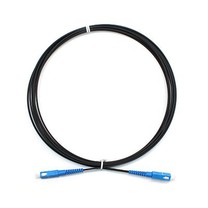In the traditional low-speed network in the past, even if the insertion loss and return loss exceeded the standard, connection instability, etc., may be acceptable for network applications, because the fiber has enough affluence to absorb the impact of these factors, but in today's increasingly high performance network, many indicators and parameters are extremely sensitive, because the link does not meet the design requirements or time-consuming and laborious, so that the designer or builder Break the brain, the occurrence of loss beyond the requirements of the network design, the test can not pass things happen.

Fiber optic fusion splicing is currently a more used connection method, relatively speaking, fusion splicing is the success rate and connection quality is higher, but it should also be noted that the fusion splice is more likely to damage or failure of one of the main factors, due to the use and maintenance process, the maintenance of the equipment operation is necessary, so its safety is a problem we must consider. In general, fusion splicing can get a smaller connection loss, generally below 0.2dB, but the return loss is not easy to control, while in the fiber optic patch cord fusion splicing process, the impact of the quality of fusion splicing many external factors, if the use of domestic is still not much use of multi-core ribbon fiber connectors such as MTP, ribbon fiber fusion splicer is more unable to avoid the fusion process of individual fiber loss The reality of excessive individual fiber loss.
The main use of fiber optic connectors is to achieve the splicing of optical fiber. Now has been widely used in fiber optic communication systems in the fiber optic connector, its many types, structure varies. But in detail, the basic structure of the various types of fiber optic connectors is the same, that is, the majority of fiber optic connectors generally use high-precision components (consisting of two pins and a coupling tube of three parts) to achieve the alignment of the optical fiber connection.






